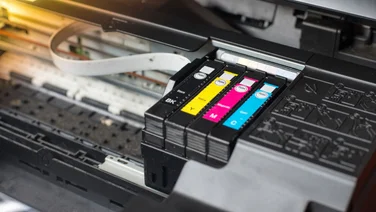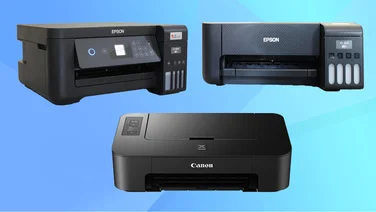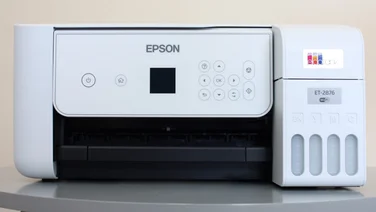To help us provide you with free impartial advice, we may earn a commission if you buy through links on our site. Learn more

Epson’s Stylus Photo P50 is one of the single-function inkjet printers available today. There’s no scanner, card reader or even a PictBridge USB port for direct camera printing; just a simple USB connection to a single PC. As you might expect, it’s smaller than most MFPs, but only just – showing just how compact the contact image sensor (CIS) scanners fitted to modern MFPs are.
Given the P50’s comparative lack of features, it’s surprising that it isn’t cheaper. While it’s basic, though, the print engine itself is reasonably well-specified. Epson’s 5,760×1,440dpi may be outclassed – on paper at least – by most competitors, but this printer’s 1.5 picolitre minimum droplet size is still very competitive. In theory, these small droplets are less visible as grain.
This isn’t the only six-ink printer around, but while others use grey or a choice of black inks, the six cartridges in Epson’s printers contain black, cyan, magenta, yellow, light cyan and light magenta; a more conventional arrangement. With lighter versions of cyan and magenta, individual dots of ink contrast less strongly with the white paper behind them, which again should have the effect of reducing visible grain in the lightest regions.

While the new Stylus Photo PX720W marks something of a departure for Epson, there’s an immediate sense of familiarity with this printer. Although it’s made from high-quality plastics and has an attractive, dimpled finish to the lid, the underpinnings seem little changed from those in other single-function Epson photo printers we’ve reviewed. This isn’t necessarily a bad thing; the P50’s internals are the same as the obsolete Stylus Photo R360, our current reference A4 photo printer.
We’ve often experienced below-average text quality from Epson photo printers, and the P50 is no exception. Our first print tests were so poor that we ran the print-head alignment routine from the driver. Unlike most devices here, this is a manual process that requires you to choose the best-quality blocks from a single sheet containing several examples.
While it did narrowly improve the output, the P50 still produced the worst quality text. Characters weren’t as jet black as those from the HP or Canon printers, while their outlines had a slightly hairy appearance that betrayed their inkjet origins. Draft text was particularly poor, with characters comprising alternate lines of black and brown. On some rows characters had been ‘torn’ out of vertical alignment.
Colour prints on plain paper were better. Although blacks and other dark shades were still a little washed out, colours were accurate and there was no obvious banding or grain. However, with 24 colour pages taking just over seven minutes, this isn’t the fastest document printer. Fortunately, the P50 makes a much better case for itself when printing photos. While it’s not fast at its best quality, with postcard-sized prints taking two minutes each, the results are worth waiting for. Prints are crisp, revealing fine detail across light and dark areas, and on Epson’s Premium gloss paper they have a convincing lab-quality finish.
Both the P50 and PX720WD use the same ink, and we tested them on the same paper. Although the results from the P50 had a slightly cooler colour balance, they matched the superb quality of those from the Stylus Photo PX720WD – with black and white shots looking particularly good. However, for this money we expect more than just great photos.






